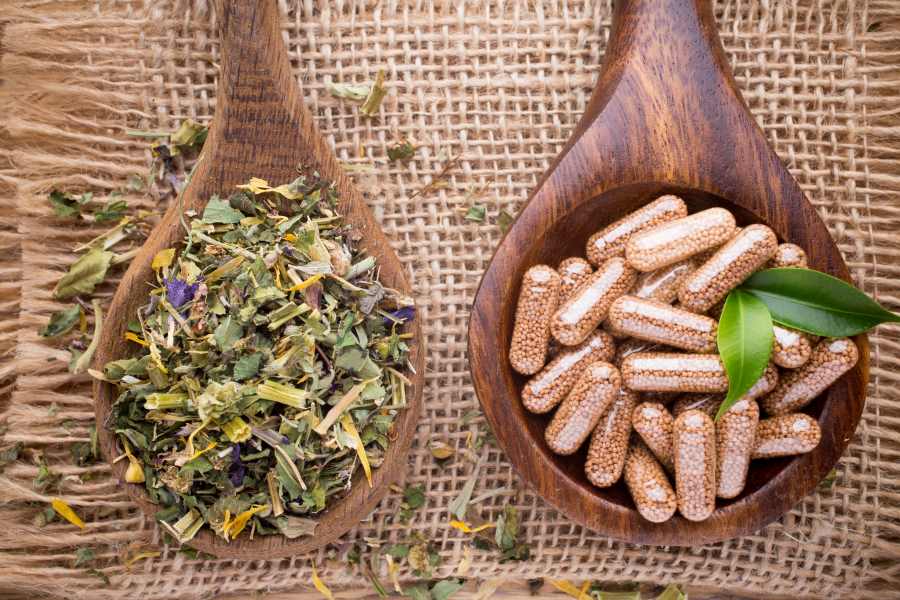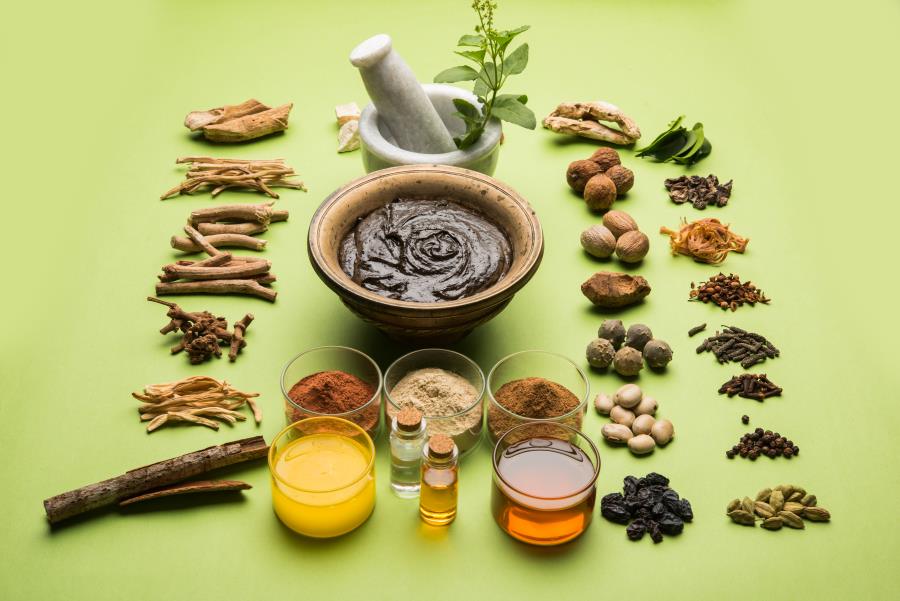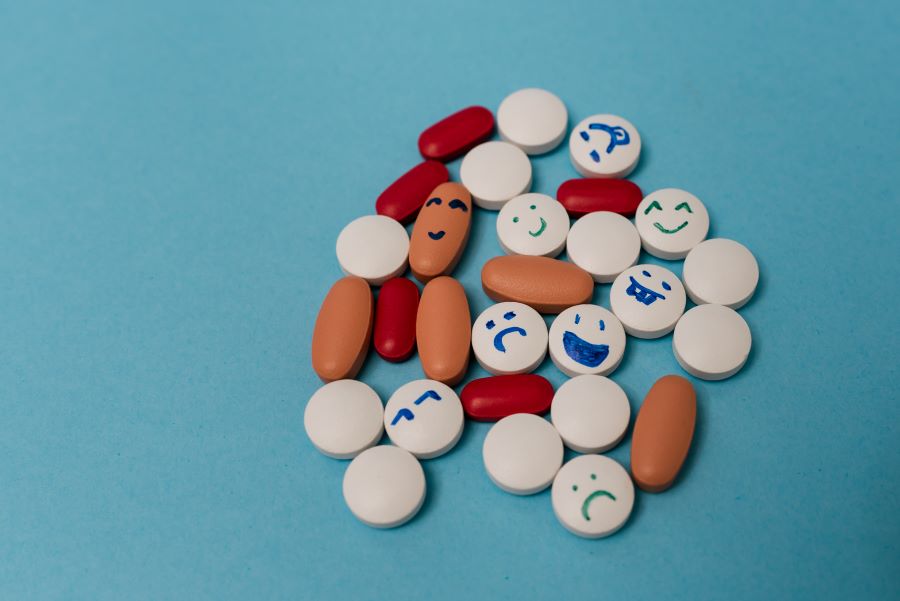Key Differences Between Allopathy and Ayurveda

Over the years, there has been a common debate regarding the health benefits of Allopathy and Ayurveda. While some argue that allopathic treatment is faster, others believe that Ayurvedic medicines are more effective and free of side effects.
Both Allopathy and Ayurveda have benefits in their respective spheres.
Do you need clarification about the debate regarding Allopathy VS Ayurveda? Find out all about it in this article.

Table of Contents

What is Allopathy?
This is probably one of the most popular means of medical treatment. Allopathic medicine refers to a system where healthcare professionals try to treat patients with drugs, radiation, or surgery. Doctors can prescribe various medications, including antibiotics, diabetic drugs, migraine, blood pressure, chemotherapy, etc.
Allopathy is a popular treatment procedure since clinical researchers and scientists produce medicines. It is a modern medical practice focusing on highly technological treatments, making it highly authentic and effective.
What is Ayurveda?
Ayurvedic medication and treatment are one of the old traditional Indian treatment methods. This treatment believes that mind, body and spirit are closely related. Such therapy aims to improve overall health rather than fighting off specific diseases. However, the treatment is considered for curing particular conditions.
This type of medication might not be based on scientific research or technologies. However, it is made from natural components, which reduces the chances of side effects.
Differences Between Ayurveda vs Allopathy
Now, you must be wondering about the differences between Allopathy and Ayurveda. The following table will help you decipher the same.
Process of Allopathic Treatments
This treatment uses detailed therapy to eliminate the disease from its roots if the symptoms keep coming back. This type of medicine has about 24 specialities, some of which are listed below.
This treatment is offered by highly qualified and licensed healthcare professionals, enhancing its authenticity and reliability. It is an evidence-based system with robust scientific and technological tools and equipment. Moreover, the process is much more effective and starts showing actions within a few days. Its clinics and medicines are readily available all over the world.
Process of Ayurvedic Treatments
This treatment includes a natural medication system that starts with an internal purification process. It then moves on to other techniques like suggesting a special diet, herbal remedies and massage therapies. It also relies on yoga and meditation. Finally, it depends on the following five constitutions of the body.
- Prithvi (Earth)
- Jal (Water)
- Agni (Fire)
- Vayu (Air)
- Akash (Space)
This type of treatment is different on an individual level. Therefore, the symptoms and causes are considered while planning the treatment procedure. Some of the famous Ayurvedic therapies are as follows.
Side Effects of Allopathic and Ayurveda Treatments
Now that you know the difference between Allopathy and Ayurveda, you should be aware of the different side effects of the two treatments.
Side Effects of Allopathic Treatment
As discussed earlier, allopathic treatments and medicines have much higher side effects. These usually occur when the immune system negatively reacts to a medication or therapy.
The type of side effect depends on the disease and type of medication. When it comes to simple diseases like fever and cold, the side effects will be mild. However, in the case of complicated diseases like cancer, diabetes, and cardiovascular diseases, the side effects will be more substantial. Common side effects might include the following.
- Skin rashes
- Allergy
- Dizziness
- Drowsiness
- Dry mouth
- Insomnia
- Headache
- Stomach issues like diarrhoea or constipation
- Nausea
- Vomiting
- Weight gain or loss
- Muscle pain or weakness
- Elevated blood sugar
- Liver damage
- Kidney issues
- Mood changes
Side Effects of Ayurvedic Treatment
Regarding Ayurveda treatment, the side effects are usually much lower. This is probably because the components are purely natural. Moreover, these are custom-planned based on the specific health conditions and attributes of the individual patients. The lack of chemicals and heavy ingredients makes consuming easier without dealing with the side effects.
However, if the dosage is incorrect, specific side effects can occur. For this, one should consult proper Ayurvedic practitioners and ensure the medicine is authentic. Here are some common side effects that can occur from the wrong dosage of Ayurveda medicine.
- Diarrhea
- Nausea
- Vomiting
- Abdominal discomfort
- Loose motion
- Rashes and allergies to the skin
- Constipation
- Heartburn
- Jaundice
- Increased blood pressure
Which is Better Between Allopathic and Ayurveda Treatments?
A common question that arises in mind at this point is whether one should consider Ayurveda or Allopathy for medical treatment. It entirely depends on the type of disease and your personal beliefs. Ultimately, one may find that using some from both systems in ways you know will best serve you and your health needs and preferences is the very best strategy.
Consulting with healthcare practitioners knowledgeable about practices from both would significantly enhance your ability to make an informed choice and build a treatment plan that best serves you and your well-being.
Why Choose Ayurveda Treatments?

Here are some reasons why you should choose Ayurveda treatments -
- If you wish to cure a chronic condition like cold, abdominal issues, or mental well-being, Ayurvedic treatment will be appropriate. However, as Allopathy uses artificial components, consuming these for a long time can have negative consequences.
- If you have a sensitive system and stomach, Ayurveda is a suitable option. It uses herbal and organic components, unlike the synthetic drugs used in Allopathy. As a result, there will not be many side effects.
- Ayurveda treatment believes in finding the disorder's root cause and treating it. This way, it is likely to eliminate the disease entirely from the grassroots level.
- The components help to remove overall toxins in your body while acting on different areas. It can be an excellent option for those who have taken heavy Allopathic medicines over the years.
- If you have problems with digestion and mental health, Ayurveda treatment and medicines can be effective for you.
Why Choose Allopathic Treatments?

On the other hand, Allopathic treatment should appeal for the following reasons.
- If you are looking for quick relief from pain or severe medical conditions, Allopathy will be the right way to go. Unfortunately, Ayurveda can be a long and time-consuming process.
- Allopathic medicines and treatment methods are scientifically tested and proven. You should consider this option if you are facing a complicated disease with severe symptoms.
- If you wish to select a correct treatment path without a second opinion, Allopathy will be the suitable option. Here, the doctors are more qualified and have access to the best equipment for diagnosing diseases.
- Allopathy treatment can provide a permanent solution with technologically advanced tools and equipment. It would help if you chose it to avoid experimentation with your health.
Is it Safe to Indulge in Both Allopathy and Ayurveda?
A potent combination of allopathy (the predominant Western conventional system of medicine) with Ayurveda can surely be made safe, but only after consulting with your primary care provider. This ensures that the combined approach is effective and minimises potential risks.
Many preparations from ayurvedic herbs and supplements might interact with the effect of prescription medicine. Check on the sources of Ayurvedic treatment in search of quality and avoid problems with contamination. Such a plan ensures that both modalities complement each other, enhancing overall treatment efficacy and patient safety.
Hopefully, now your search for Allopathy VS Ayurveda might end as this article pointed out, both types of treatments along with their advantages and drawbacks. You must understand your disease and health requirements before choosing a treatment method. This will help you decide between Ayurvedic or Allopathic medicine.
Protect What Matters - Explore Other Insurance Options














